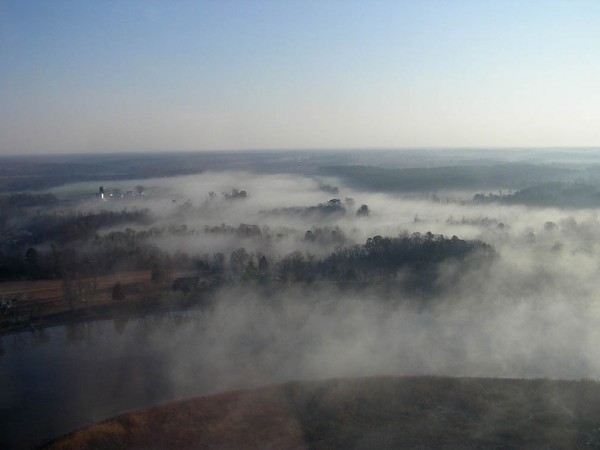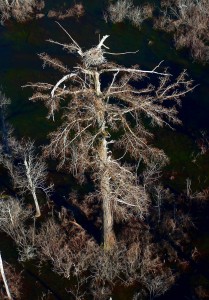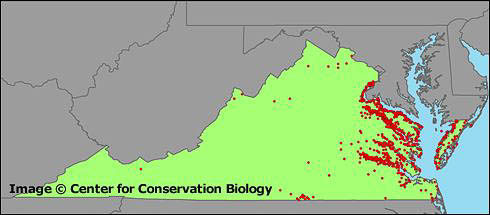Virginia Eagle Survey continues to reach milestones
Waterbird community expands on the Upper Pee Dee (ALCOA)
July 4, 2010Byrd surveys help save eagles
July 6, 2010
Written by Bryan Watts
July 5, 2010

Long-time collaborator on aerial surveys, Captain Fuzzzo (Cessna Pilot), with Bryan Watts and Mitchell Byrd. Photo by the Center for Conservation Biology.
The Virginia Bald Eagle Survey is a national treasure. The survey has become one of the most significant serial data sets in the world. Over the past 55 years, the survey has documented biocide-induced reproductive suppression, the resulting population low, and a dramatic recovery in both reproductive rates and the overall population following the ban of DDT and like compounds. More than population information alone, the effort has produced a wealth of ecological information on a population recovering within an increasingly human-dominated landscape. It has become one of the best records of arguably the greatest conservation achievement in our nation’s history.

A fog lifts from a farm along the Mattaponi River during an early morning survey flight. Photo by Bryan Watts.

A bald eagle incubates in nest on a several hundred year old bald cypress in the Dragon Swamp. Photo by Bryan Watts.
During the 2010 survey, CCB checked more than 900 nests and monitored 684 occupied territories. This number represents an 11.8% increase over 2009. The number of breeding attempts increased by 10.2% and 136 new nests were mapped. Eagle territories were located within 47 counties and 10 independent cities. A total of 883 chicks were counted during the productivity flight. This is the highest chick production recorded throughout the long history of the survey. The Virginia population continues to have tremendous reproductive momentum. Of 10,092 chicks documented in the past 34 years, 8.7% were produced in 2010 and 70.7% were produced since 2000. In general, this momentum is the combined result of an overall increase in the breeding population, the breeding success rate and the average brood size.

Map of active bald eagle nests surveyed in 2010 – the 55th consecutive Annual Bald Eagle Survey of Virginia. 900 nest structures were surveyed, and more than 680 breeding pairs produced more than 880 chicks. Map by the Center for Conservation Biology.
We very much appreciate the financial contributions of the U.S. Fish and Wildlife Service and the Virginia Society of Ornithology in keeping the survey running. Survey information is used by an entire community of government agencies, NGOs, environmental consulting firms, and landowners.
Project sponsored by the Center for Conservation Biology (CCB), the Virginia Society of Ornithology (VSO), and the US Fish & Wildlife Service (USFWS).



